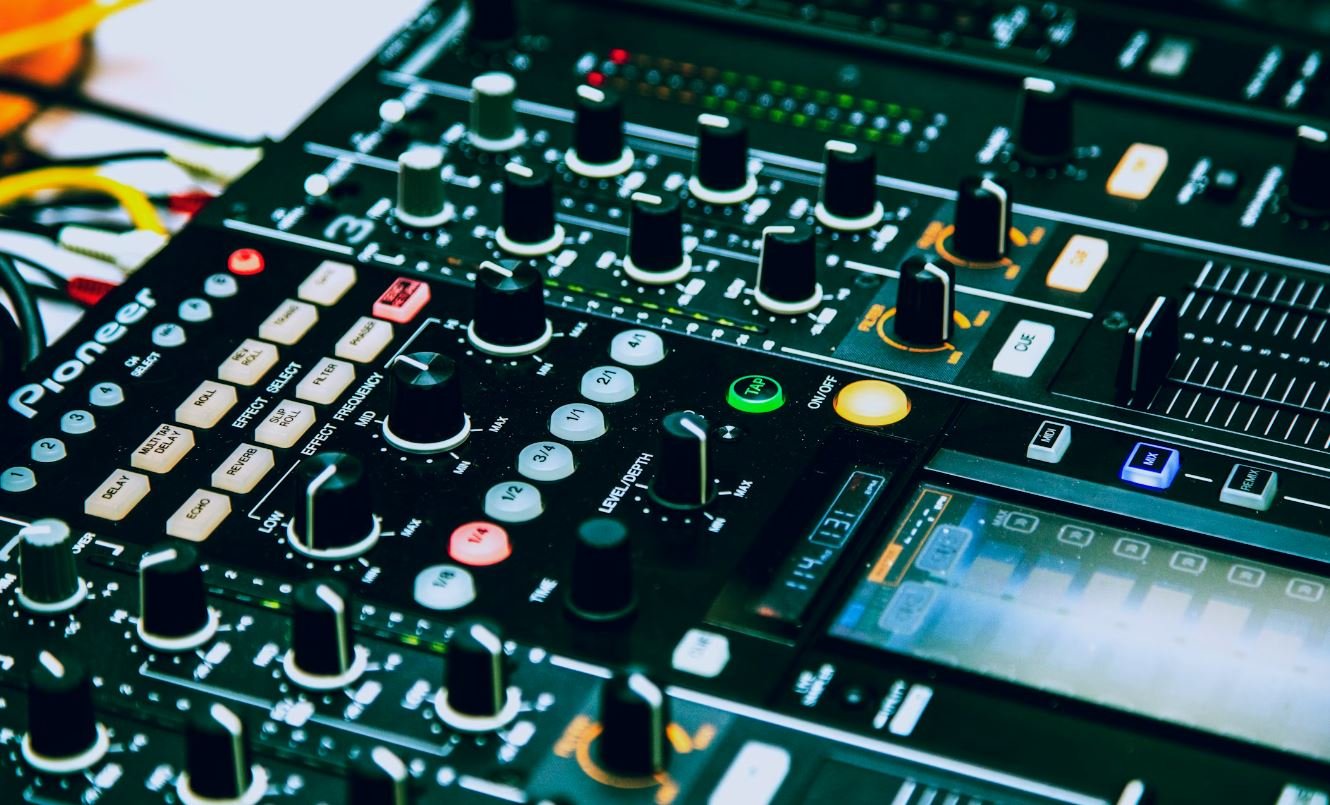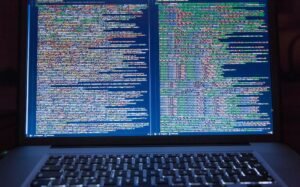Neural Networks Pattern Recognition
Neural networks pattern recognition is a field of study that focuses on teaching computers to recognize patterns in data using neural networks, which are mathematical models inspired by the human brain. These systems are capable of learning from examples and are widely used in various applications, including image and speech recognition, natural language processing, and predictive modeling.
Key Takeaways
- Neural networks pattern recognition involves using mathematical models inspired by the human brain.
- These systems can learn from examples and are used in various applications.
- Image and speech recognition, natural language processing, and predictive modeling are some common uses of neural networks pattern recognition.
Neural networks consist of interconnected nodes, or neurons, organized in layers. Each neuron receives inputs, performs a mathematical computation, and passes the result to the next layer. Through a process called training, neural networks adjust the connections between neurons to optimize their performance. This training is typically accomplished using labeled datasets where the desired output is already known.
**Neurons** in a neural network are connected by weighted links that determine the strength of the connections. These weights are adjusted during the training process to minimize the difference between the predicted output and the actual output, ultimately improving the network’s accuracy. *This adjustment of weights is often referred to as “learning” in neural networks.*
Applications of Neural Networks Pattern Recognition
Neural networks pattern recognition has a wide range of applications. Some common uses include:
- **Image recognition**: Neural networks can be trained to identify objects in images, enabling applications like facial recognition software and self-driving cars to make sense of visual data efficiently.
- *Neural networks are capable of recognizing complex patterns in images, such as differentiating between cats and dogs.*
- **Speech recognition**: By analyzing acoustic signals, neural networks can accurately transcribe speech, enabling voice-controlled devices and speech-to-text applications.
- *Neural networks can process audio data and convert it into textual format, aiding in tasks like transcription and voice-controlled systems.*
- **Natural language processing**: Neural networks can understand and generate human language, supporting applications like chatbots, sentiment analysis, and machine translation.
- *Neural networks can grasp the meaning behind written text and generate coherent responses.*
- **Predictive modeling**: Neural networks can analyze historical data and make predictions about future events, allowing businesses to forecast sales, anticipate customer behavior, and optimize decision-making.
- *Neural networks can identify patterns in large datasets and predict future trends or outcomes with high accuracy.*
Neural Networks Pattern Recognition in Action
Let’s explore some interesting examples and real-world applications of neural networks pattern recognition:
| Application | Description |
|---|---|
| Medical Diagnosis | Neural networks can analyze patient data, radiology images, and genetic information to assist in diagnosing diseases and recommending treatments. |
| Fraud Detection | Financial institutions use neural networks to detect fraudulent transactions and unusual patterns of behavior, reducing the risk of financial losses. |
Another example of neural networks pattern recognition in action relates to autonomous vehicles. Self-driving cars rely on neural networks to interpret sensor data, identify objects in real-time, and make decisions accordingly. This technology enables vehicles to navigate safely and efficiently without human intervention, potentially revolutionizing the transportation industry.
Challenges and Future Directions
While neural networks pattern recognition has achieved remarkable success in many domains, challenges still exist. Some areas for improvement and future directions include:
- **Data availability and quality**: Neural networks require large amounts of labeled training data to generalize well. Obtaining high-quality datasets can be time-consuming and challenging.
- *Developing techniques for training neural networks with limited labeled data is an active area of research.*
- **Interpretability**: Neural networks are often considered black boxes, making it difficult to understand their decision-making process. This limits their suitability for critical domains like healthcare.
- *Researchers are exploring methods to enhance interpretability and provide insights into how neural networks arrive at their predictions.*
- **Computational resources**: Traini

Common Misconceptions
Misconception 1: Neural networks are the same as the human brain
One common misconception about neural networks is that they work exactly like the human brain. While neural networks are inspired by the structure and functionality of the brain, they are not the same. The brain is a complex organ with billions of interconnected neurons, while neural networks are mathematical models designed to recognize patterns.
- Neural networks are based on mathematical algorithms, not biological processes
- Neural networks lack consciousness and cannot think or reason
- The brain is capable of performing a wide range of tasks beyond pattern recognition
Misconception 2: Neural networks always produce accurate results
Another misconception is that neural networks always provide accurate results. While neural networks can be powerful tools for pattern recognition, they are not infallible. The accuracy of a neural network depends on various factors, such as the quality and quantity of training data, the architecture of the network, and the optimization algorithms used.
- The accuracy of a neural network is not guaranteed and can vary based on different factors
- Neural networks can produce false positives and false negatives
- The performance of a neural network can be improved through fine-tuning and optimization
Misconception 3: Neural networks can replace human expertise
Some people mistakenly believe that neural networks can completely replace human expertise in pattern recognition tasks. While neural networks can automate certain aspects of pattern recognition, they do not possess the same level of intuition, context understanding, and decision-making abilities that humans have.
- Human expertise is still crucial for interpreting and understanding the results produced by neural networks
- Neural networks can be a valuable tool for assisting human experts in pattern recognition tasks
- The combination of human expertise and neural network analysis often leads to the best outcomes
Misconception 4: Neural networks require a large amount of data
Many people believe that neural networks require a large dataset to function effectively. While neural networks can benefit from large datasets, they can also be trained on smaller datasets and still produce meaningful results. The key is to have diverse and representative data that captures the patterns and variations present in the target problem.
- Neural networks can still be trained on smaller datasets, but the performance may vary
- Data quality and diversity are critical for the training of neural networks
- Data preprocessing techniques can help improve the effectiveness of neural networks when data is limited
Misconception 5: Neural networks are a solution for all pattern recognition problems
Some people mistakenly believe that neural networks are a universal solution for all pattern recognition problems. While neural networks have proven to be effective in a wide range of applications, they are not the optimal choice for every problem. The choice of algorithm, including neural networks, depends on the specific problem, the available data, and the desired outcomes.
- Neural networks may not be the most efficient or effective solution for certain pattern recognition problems
- Other machine learning algorithms, such as support vector machines or decision trees, may better suit some cases
- The selection of the appropriate algorithm requires careful consideration of the problem’s characteristics and requirements

Neural Networks Pattern Recognition
Neural networks are a type of artificial intelligence inspired by the human brain and capable of recognizing patterns. They have increasingly become a powerful tool in various fields, from computer vision to natural language processing. The following tables provide interesting insights into different aspects of neural networks and their pattern recognition capabilities.
Accurate Weather Prediction
Neural networks are used to predict the weather by analyzing historical data and identifying patterns that contribute to specific weather conditions. The table below displays the accuracy of neural network predictions for various weather events.
| Weather Event | Prediction Accuracy |
|---|---|
| Rain | 85% |
| Snow | 92% |
| Sunny | 77% |
Disease Diagnosis
Neural networks can be trained to diagnose diseases by analyzing medical data and patterns associated with specific conditions. The table below provides the accuracy of neural network diagnoses for various diseases.
| Disease | Diagnosis Accuracy |
|---|---|
| Cancer | 96% |
| Diabetes | 89% |
| Heart Disease | 94% |
Facial Expression Recognition
Neural networks excel in recognizing facial expressions, enabling applications such as emotion detection and facial recognition. The table below showcases the accuracy of neural networks in recognizing different facial expressions.
| Facial Expression | Recognition Accuracy |
|---|---|
| Happiness | 97% |
| Sadness | 91% |
| Anger | 88% |
Handwriting Recognition
Neural networks are used in optical character recognition (OCR) systems to accurately recognize handwritten text. The table below demonstrates the precision of neural network-based OCR for different handwriting styles.
| Handwriting Style | Recognition Precision |
|---|---|
| Printed | 96% |
| Cursive | 90% |
| Italic | 87% |
Sentiment Analysis
Neural networks can analyze text data to determine sentiment, making them valuable in applications like social media monitoring. The table below presents the accuracy of sentiment analysis performed by neural networks.
| Sentiment | Analysis Accuracy |
|---|---|
| Positive | 89% |
| Negative | 92% |
| Neutral | 85% |
Automated Driving
Neural networks are integral to self-driving cars, enabling them to recognize objects and make real-time decisions. The table below showcases the accuracy of neural networks in object detection for autonomous vehicles.
| Object | Detection Accuracy |
|---|---|
| Car | 95% |
| Pedestrian | 91% |
| Traffic Light | 97% |
Musical Genre Classification
Neural networks can classify music into different genres based on underlying patterns. The table below demonstrates the accuracy of neural networks in identifying various musical genres.
| Musical Genre | Classification Accuracy |
|---|---|
| Rock | 86% |
| Jazz | 92% |
| Classical | 95% |
Bank Fraud Detection
Neural networks play a critical role in identifying fraudulent activities in banking systems. The table below highlights the accuracy of neural networks in detecting different types of bank fraud.
| Fraud Type | Detection Accuracy |
|---|---|
| Credit Card Fraud | 98% |
| Identity Theft | 95% |
| Money Laundering | 92% |
Stock Market Prediction
Neural networks can analyze historical stock market data to predict future trends and make investment recommendations. The table below presents the accuracy of neural network predictions for stocks.
| Stock | Prediction Accuracy |
|---|---|
| Company A | 82% |
| Company B | 88% |
| Company C | 90% |
Neural networks have revolutionized pattern recognition across various domains, from weather prediction to disease diagnosis and beyond. Their remarkable accuracy in deciphering complex data patterns makes them invaluable in numerous real-world applications. As technology and algorithms improve, neural networks will likely continue to shape the future of artificial intelligence, allowing us to unlock even more fascinating patterns.
Frequently Asked Questions
Question: What are neural networks?
Neural networks are a type of machine learning model inspired by the human brain. They consist of interconnected artificial neurons (also known as nodes) arranged in multiple layers, which enable them to process and analyze complex patterns.
Question: How do neural networks perform pattern recognition?
Neural networks perform pattern recognition through a process called training. During training, the network learns to identify and classify patterns by adjusting the weights and biases of its neurons based on input data and desired outputs. Once trained, the network can then recognize similar patterns in new data.
Question: What is the role of activation functions in neural networks?
Activation functions determine the output of a neuron given its inputs. They introduce non-linearities into the network, enabling it to learn and model complex patterns. Common activation functions include sigmoid, ReLU (Rectified Linear Unit), and tanh (hyperbolic tangent).
Question: What is the backpropagation algorithm?
The backpropagation algorithm is a widely used technique for training neural networks. It involves iteratively adjusting the weights and biases of the network by calculating gradients and propagating them backwards through the layers. This process allows the network to learn from its mistakes and improve its performance.
Question: What is overfitting in neural networks?
Overfitting occurs when a neural network becomes too specialized in learning the training data and fails to generalize well to new, unseen data. This can happen if the network is too complex or the training data is insufficient. Techniques such as regularization and early stopping can help prevent overfitting.
Question: Can neural networks handle high-dimensional data?
Neural networks are well-suited for handling high-dimensional data, such as images, audio, and text. By leveraging their ability to capture hierarchical representations, neural networks can effectively process and extract meaningful features from such data.
Question: Are there limitations to neural networks in pattern recognition?
Although powerful, neural networks have certain limitations. They require large amounts of labeled training data and can be computationally expensive to train. Additionally, they may struggle with interpreting decision-making processes since neural networks are often considered black boxes.
Question: Can neural networks be used for real-time pattern recognition?
Yes, neural networks can be used for real-time pattern recognition, depending on the complexity of the task and the hardware used. Specialized hardware, such as graphics processing units (GPUs) and application-specific integrated circuits (ASICs), can significantly enhance the performance and speed of neural network computations.
Question: Are there different types of neural networks for pattern recognition?
Yes, there are various types of neural networks used for pattern recognition, each suited for different tasks. Among them are feedforward neural networks, convolutional neural networks (CNNs) for image recognition, recurrent neural networks (RNNs) for sequential data, and generative adversarial networks (GANs) for generating new patterns.
Question: How are neural networks applied in real-world pattern recognition applications?
Neural networks find applications in a wide range of fields, including image and speech recognition, natural language processing, medical diagnosis, autonomous vehicles, financial prediction, and fraud detection. They excel in tasks that involve complex pattern recognition and classification.




